How to choose a toaster oven to save space, money, and time
Here are the top tips from our expert toasters


Knowing how to choose a toaster oven for your kitchen style and household needs within a fixed budget can be a bit of a balancing act. If you choose one that's too big, you'll resent your oven for taking up more space than it needs. However, if you opt for a basic. cheap model, you risk cutting out useful features.
The ever-expanding toaster oven market can be a tough one to navigate. The best toaster ovens can cover a range of people's needs, but every kitchen has its own unique quirks. That's why we asked our experts to help you choose the perfect toaster oven for your home.
We've answered all the common questions that crop up when people are choosing a toaster oven, such as, how much you should spend on a toaster oven as well as which functions are essential, which are gimmicks, and which are nice to have, but not necessities. We'll also tackle what you can cook in a toaster oven and the toaster oven vs toaster debate. We're here to be your one-stop shop for all things toaster ovens.
How to choose a toaster oven
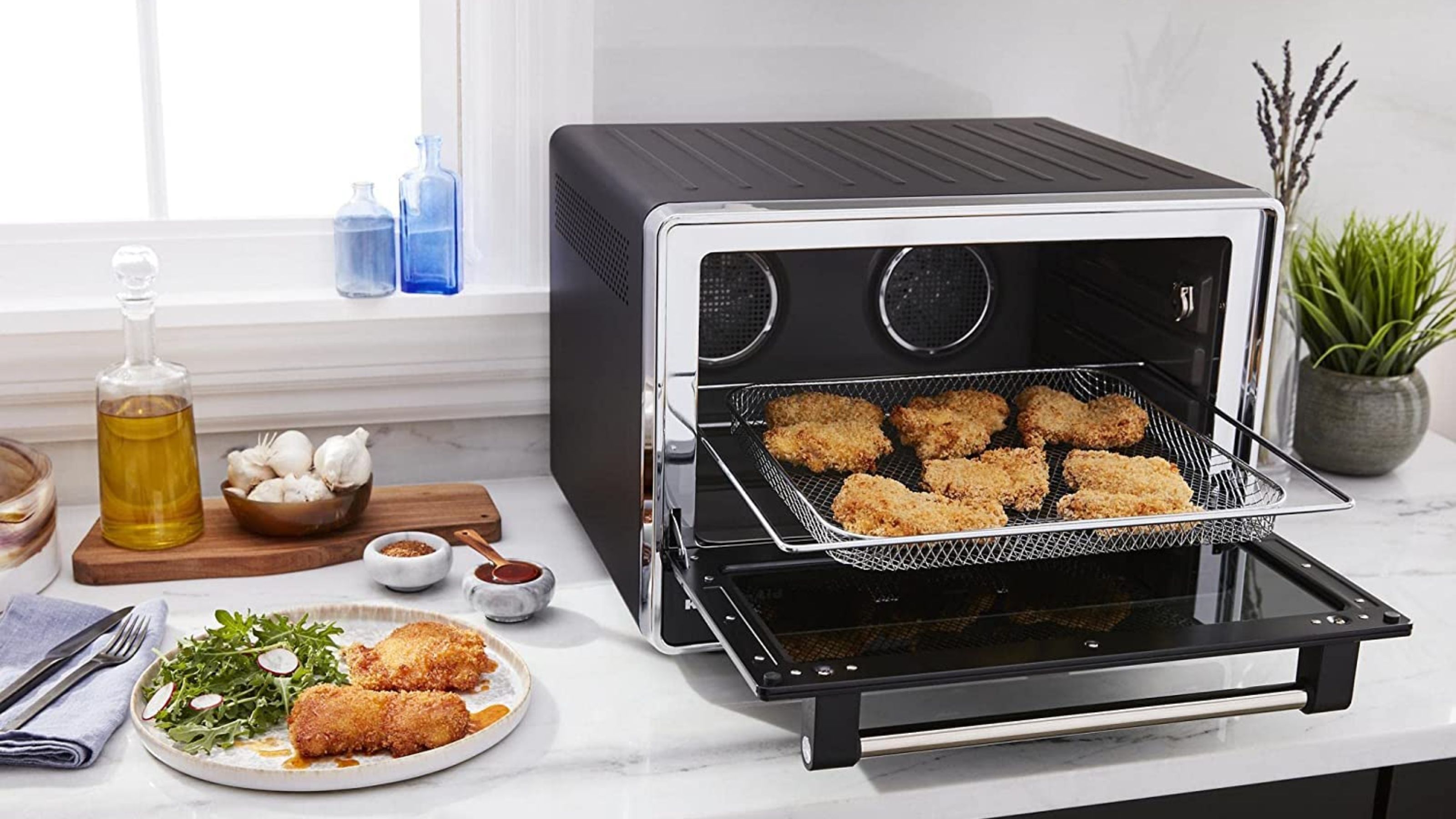
Before you dive into a buying guide for the best toaster ovens, it's a good idea to have some parameters and features that you know are deal-breakers. For example, if you don't own an air fryer and would really like one, it's worth looking at the toaster ovens that come with air fry functions. These will save you a lot of space and money. However, if you've already bought one of the best air fryers on the market, you can opt for a more compact, basic option and avoid paying a premium on functions that you simply won't use.
Matching aesthetics and style

Whilst we are all about the practicalities in our test team, we also know that it doesn't hurt if your appliance looks pretty too. Each kitchen has its own feel and style and, thankfully, there's a toaster oven for every single one. Here's a small sample of the kind of versatility you'll find in the toaster oven market:
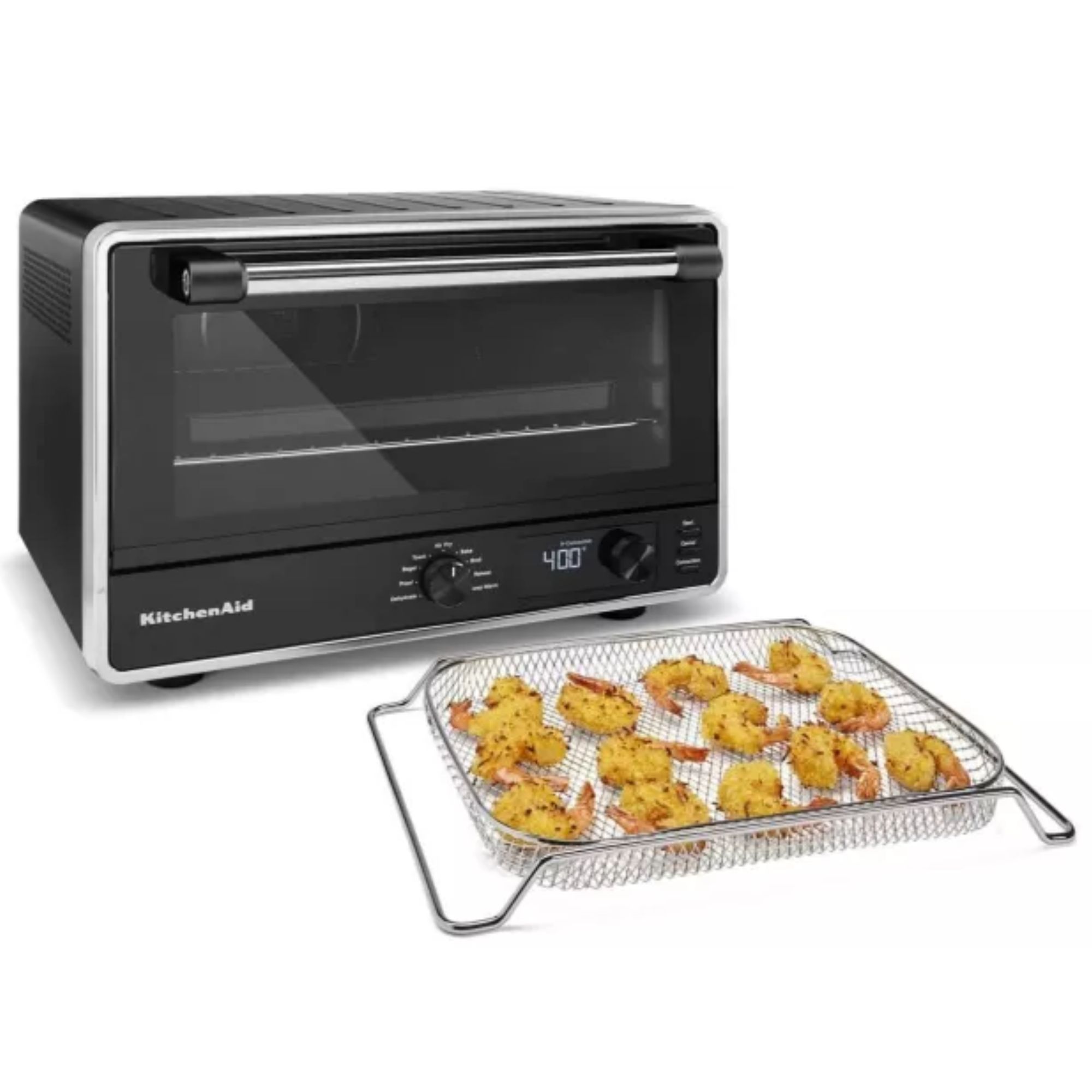
For traditional kitchens
Nothing says classic quite like KitchenAid. Their toaster oven sits at the top of our buying guide based on both its performance and looks.

For industrial-style kitchens
This means business. Wolf's practical aesthetic makes no secret of the fact that it's designed with pure power and performance in mind. It more than delivers on both of those fronts.

For minimalistic kitchens
The light colors and simple design of the Fotile means that it blends seamlessly into simple, spacious kitchens. It comes with forty presets too.
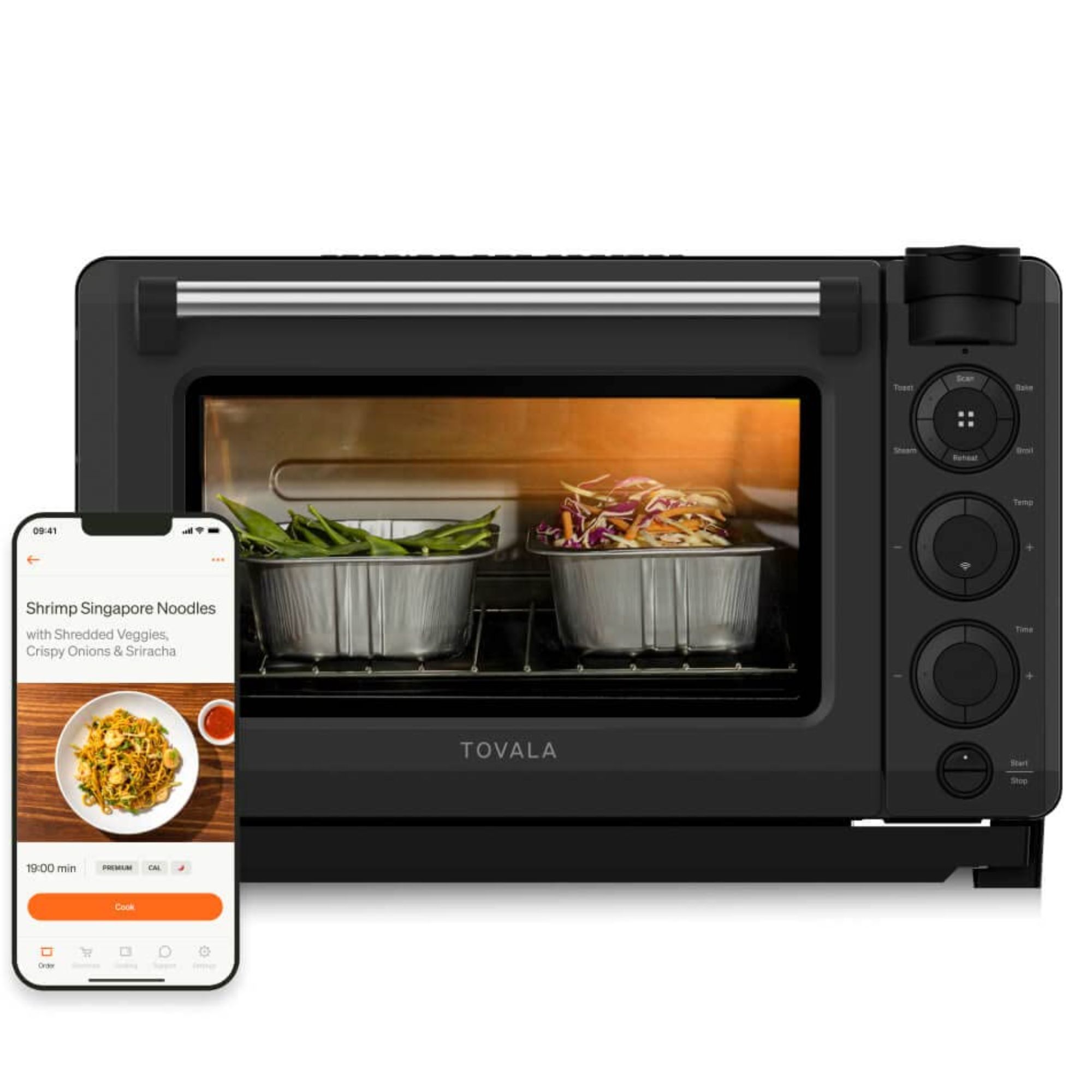
For techy kitchens
Touchscreen, techy kitchens with lots of gadets will welcome the Tovala. It's super smart, comes with a useful app, and cooks to perfection every time.
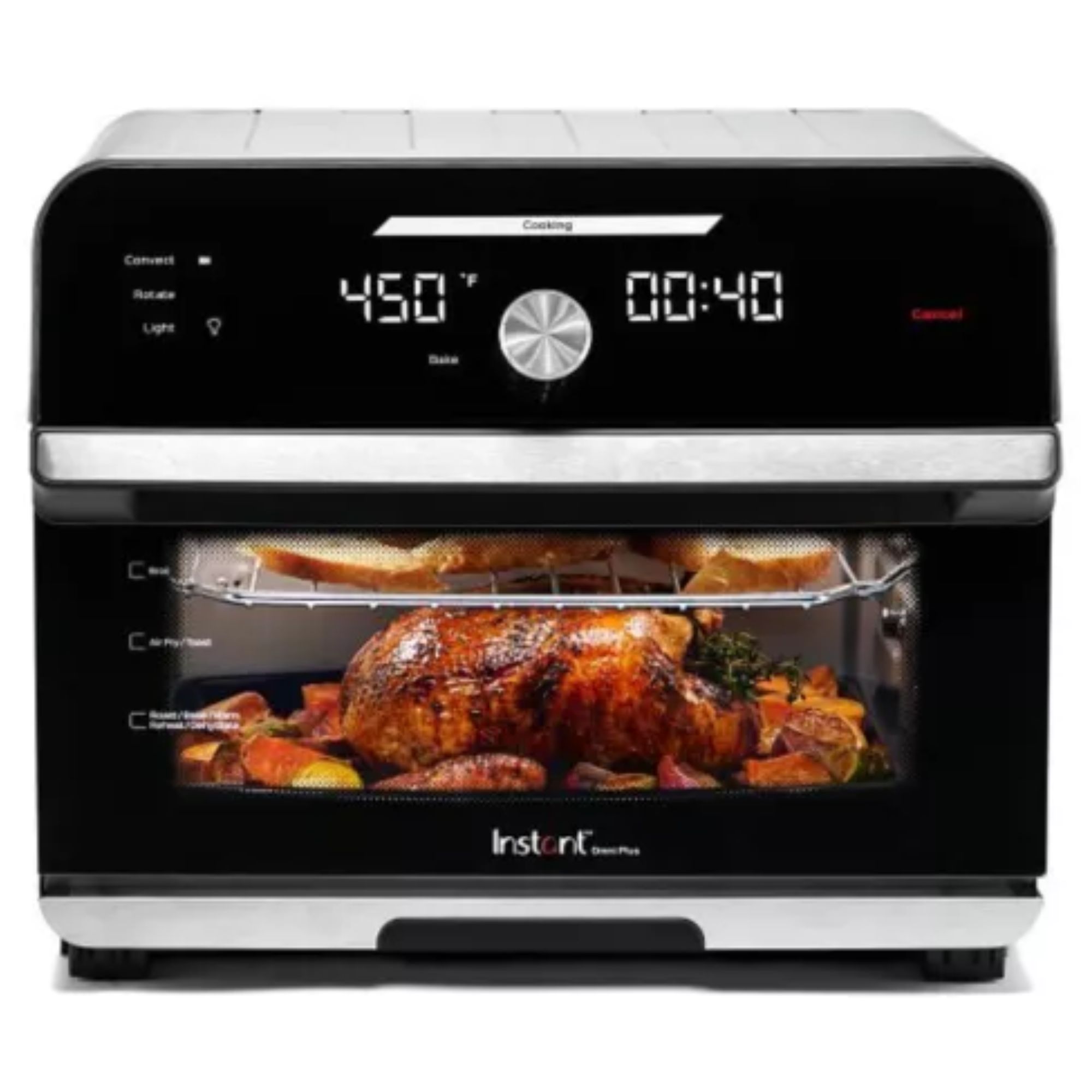
For simple kitchens
A small appliance for simple kitchens, this versatile option is small, and low-maintenance, and it will easily blend in with any appliances or hobs that you have on display.
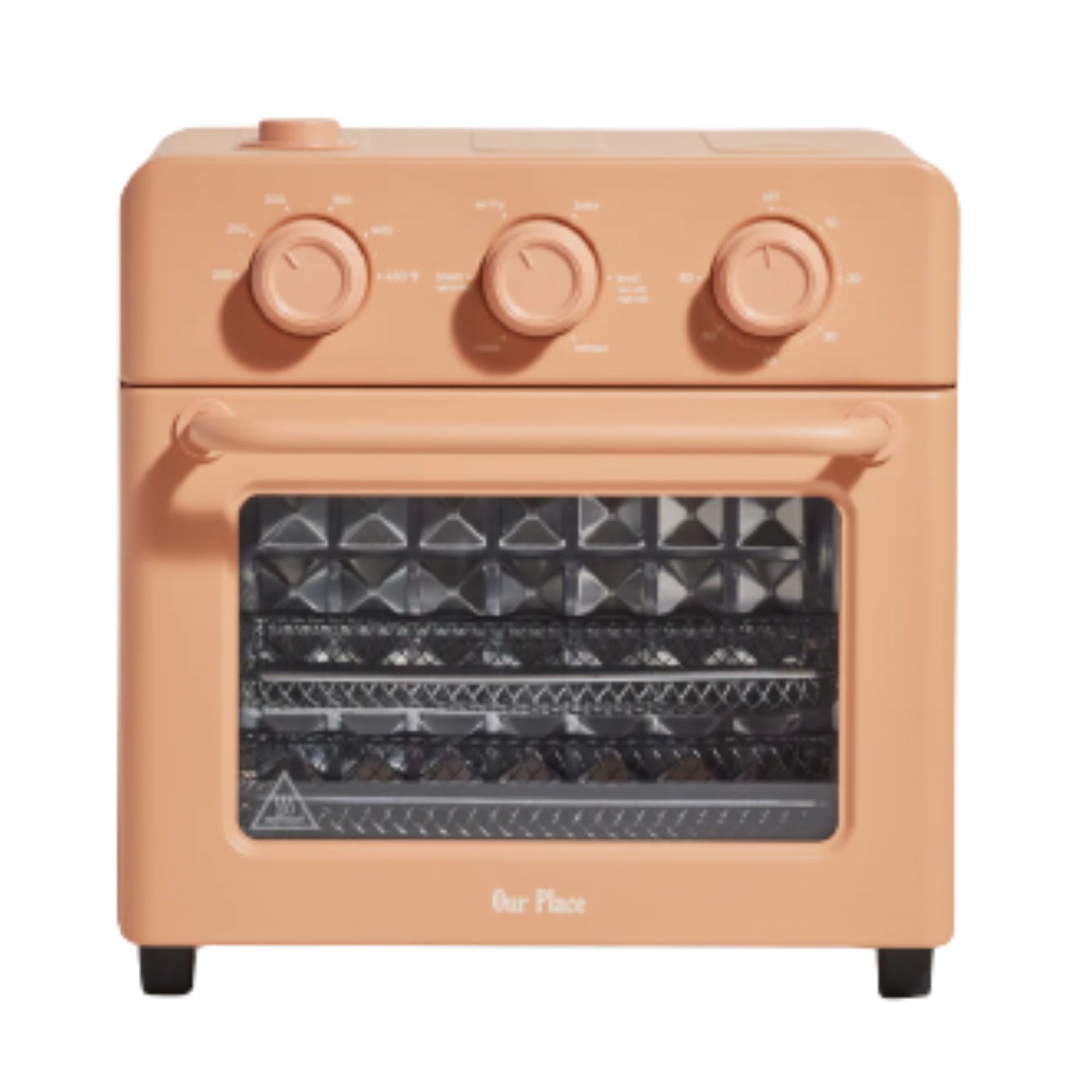
For colorful kitchens
We love the Wonder Oven for its compact footprint, color-options, and range of useful functions. It's perfect for small apartments.
What sort of size and capacity do you need?

Probably the most common questions that people ask around toaster ovens are 'What size toaster oven do I need?' and 'What does the capacity of a toaster oven really mean?'.
The size of the toaster oven that you choose depends upon your countertop space and the size of your household. We'd recommend measuring your countertops and cupboards so that you can work out where you have space for the toaster on your countertop. There are some compact options, so don't despair if you're a small-space dweller.
Design expertise in your inbox – from inspiring decorating ideas and beautiful celebrity homes to practical gardening advice and shopping round-ups.
A super compact toaster oven will probably have 0.5-0.7 cubic feet of capacity inside. These will let you toast up to four slices of bread and you'll be able to cook small meals inside them. They're best suited for single people or couples who don't need to batch cook.
If that sounds like it's a little limiting, you can look at models with more space, which might span up to 1 cubic foot. At this size, you can toast six slices of bread and you could cook a meal for a small household. You're not quite catering for a family of five yet, but you could do four at a push.
If you need to skip to the large sections of all appliances because you've got a hungry household, look for air fryers with more than one cubic foot of space. You can cook full meals in these ovens, catering to plenty of people. They're still smaller than traditional ovens, but will do a good job for you.
This might have gotten you thinking about more than just the space in your kitchen. You'll also be wondering about foods. If you're going to cook a whole roast chicken, you'll need a toaster oven with enough capacity in it. You'll also need to think about functions and special features, which is going to need a whole new section. Keep scrolling.
Which functions and features are important?
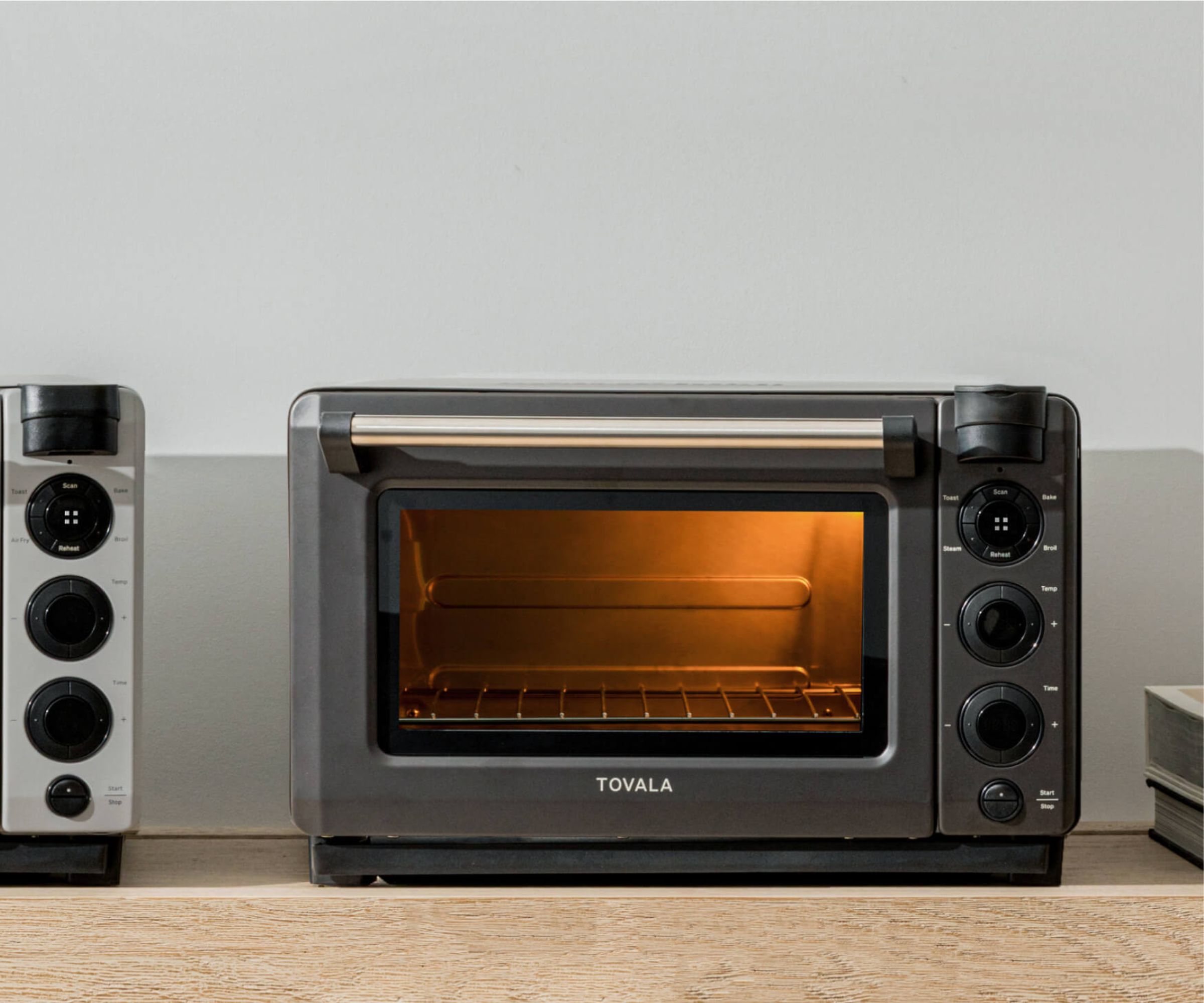
When we're talking about toaster ovens, there's a bit of a clue in the name for one of the key features that you'll be able to enjoy: toasting, All toaster ovens can brown your bread, although not all of them can do it as evenly as each other. This is the one function that is guaranteed.
You're also likely to have some simple controls integrated into your toaster oven. You can set timers and temperatures for different breads and bakes that you plan on trialing. It's worth checking the range of these since some toaster ovens stay relatively cool and others can take you up to 450 °F.
A common function that you'll find integrated into lots of toaster ovens is baking and roasting. Even if it's not explicit, if you can switch-up the temperature and time that your toaster oven is running, you can bake and roast. If you have a fan at the back of your toaster oven, you'll be able to treat it like a mini oven, which circulates hot air to cook your food fast and evenly. Oftentimes, toaster ovens and convection ovens get confused, but that's because they're often the same product. It's worth looking out for if you want a more energy-efficient model compared to your main oven.
You might also be able to broil, which means that you can brown cheese melts and add some golden colors to your dishes. We've tested models that can air fry, slow cook, and more. It's worth making a list of which appliances you don't have, but it would be nice to have and you can look for these functions in your toaster oven.
On the more technical side, it's worth checking energy efficiency and safety features. You'll want a well-insulated model with good performance, so that you can save on your utilities.
Some air fryers have interior lights, so that you can check on the progress of your food without letting the heat out, they'll come with accessories, such as pans, racks, and rotisserie kits, and might have racks so that you can cook multiple dishes at once.
What's good value and a reasonable warranty?
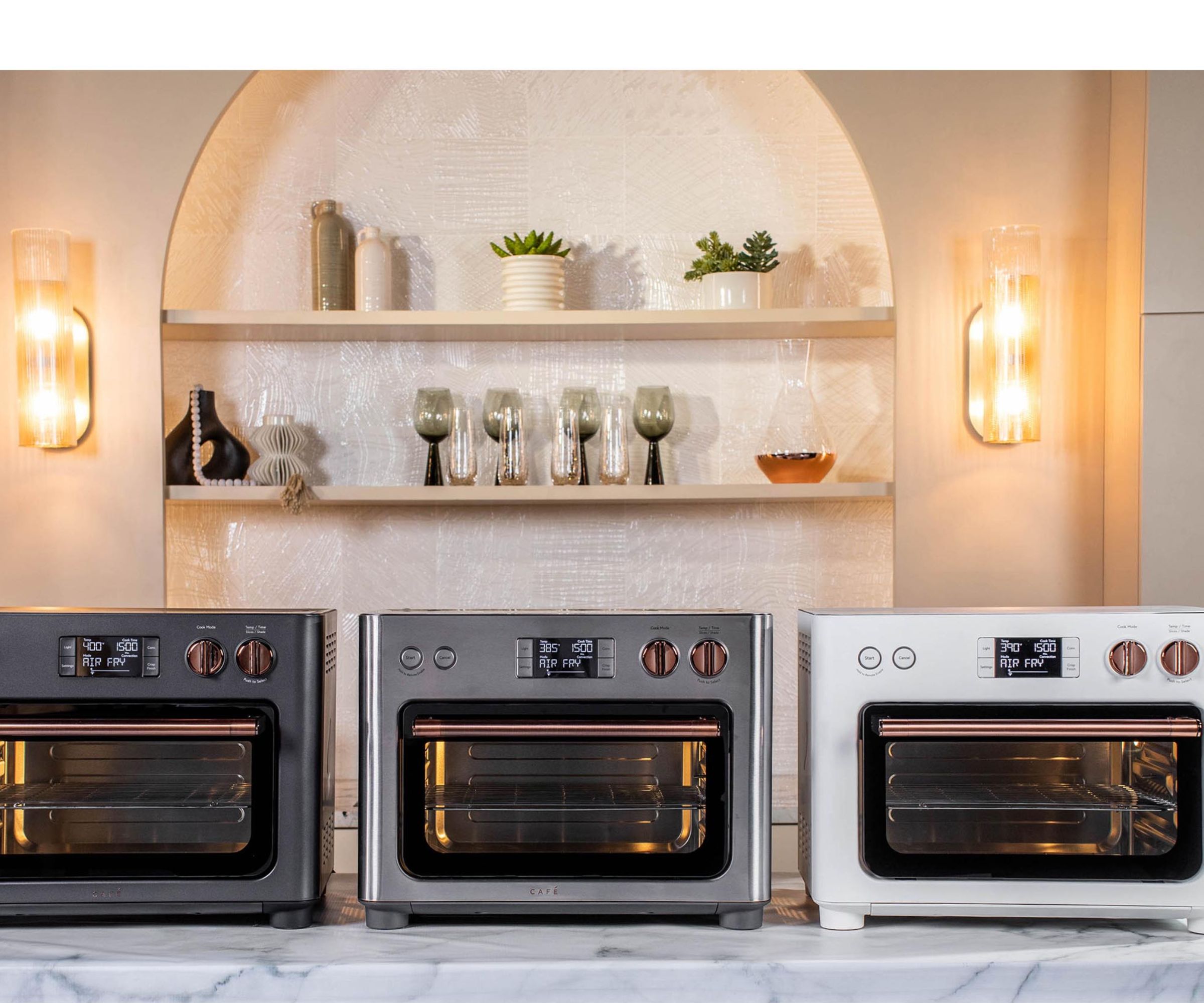
There's no single, numerical answer to the question 'how much should I spend on a toaster oven?'. As with capacity, different price brackets have different offerings. Reputable or well-respected brands might come with a premium price tag, but that's often because they'll have a five or ten year warranty, which is really worth paying some extra money for.
If you want to take a look at the numbers, here a rough idea of what we've seen on the market:
Basic models that will do no more than toasting and reheating in small quantities can cost you as little as $30-$50. Of course, you get what you pay for here, so they'll be basic, small, simple, and probably not well-built.
If you'd like a little more than that, but less than luxury, you'll want to set aside $50-$150. These generally offer a good balance of features, capacity, and build quality. You'll get some more functions and more space inside your toaster oven from good brands.
If you like life's luxuries, you'll be looking at spending between $150 and $400. These models will often come with larger capacities and impressive features and they'll be from premium brands, such as Wolf. You can treat these like your bigger, domestic convection ovens, enjoy pre-set functions, air frying capabilities, and more.
FAQs
Which safety features are important on a toaster oven?
When we talk about safety features, we don't mean anything too elaborate or crazy. Simple auto-shut-offs can prevent your toaster oven from overheating and they'll save on energy usage too. Another important safety feature is the cool-touch exterior. This means that little hands are at less of a risk of being burnt if you're doing baking with the children, for example.
Are toaster ovens worth it?
If you often find yourself using just one rack of your big oven at home, a toaster oven can reduce your utilities, whilst covering the functions of a number of other appliances on your countertop (toasters, dehydrators, air fryers and more). Small homes can really benefit from a toaster oven. On the other end of the spectrum, if you often find your kitchen running at full-capacity, it can be helpful to have a toaster oven to offer you that little bit more capacity if you're entertaining.
If I have a toaster, do I need a toaster oven?
If you'll just use your toaster oven for toast, you probably don't need a toaster oven. In fact, your toaster will do a better job of toasting different types of bread for you. However, if you plan on investing in an air fryer and a dehydrator too, a toaster oven could be a great investment.
What are the four types of toaster ovens?
People talk about four categories of toaster ovens, but these can be misleading. There's really only one toaster oven and then the different models are variants on that. The first variant is a pop-up toaster. I'd argue that these are completely different appliances. Although both can toast bread, pop-up toasters have a singular function and they get much more nerdy about bread types. Toaster ovens, on the other hand, take a more generic approach to toasting.
The other variants of toaster ovens are convection toaster ovens and air fryer toaster ovens. The clue is really in the name for these. A convection toaster oven doesn't just use heating elements, it also has a fan at the back to turn your toaster oven into a mini oven too. An air fryer toaster oven is similar to a convection toaster oven. It has the technology to turn the simple toaster oven into an air fryer too. This will be one of the 'special features' that you can search for.

Laura is our eCommerce editor. As a fully qualified barista, she's our expert in all things coffee and has tested over thirty of the best coffee makers on the market. She has also interviewed Q-Graders and world-leading experts in the coffee industry, so has an intimate knowledge of all things coffee. Before joining Homes & Gardens, she studied English at Oxford University. Whilst studying, she trained as a master perfumer and worked in the luxury fragrance industry for five years. Her collection of home fragrance is extensive and she's met and interviewed five of the world's finest perfumers (also known as 'noses'). As a result of this expansive fragrance knowledge, she always puts quality and style over quantity and fads. Laura looks for products which have been designed simply and with thoughtful finishes.